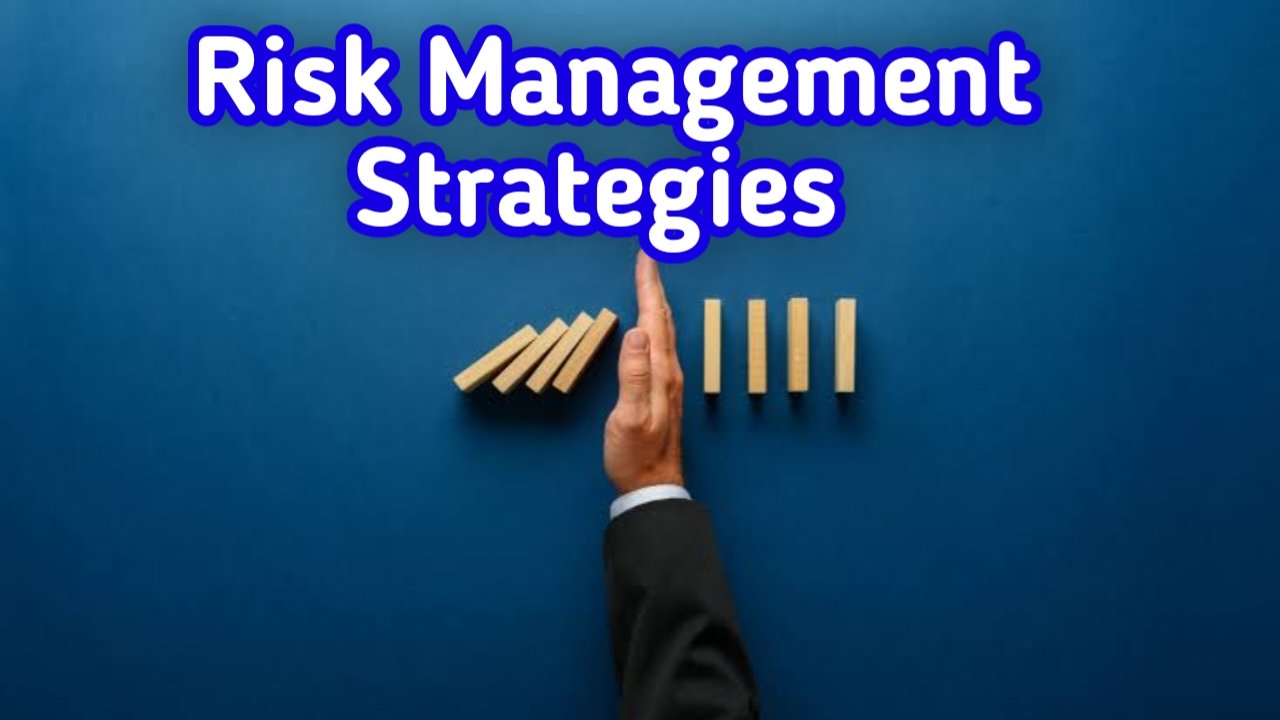Risk Management Strategies:- In the unpredictable world of business and life, risk lurks around every corner, waiting to disrupt plans and derail progress. However, with strategic risk management, individuals and organizations can proactively identify, assess, and mitigate potential threats, turning uncertainty into opportunity. In this comprehensive guide, we’ll delve into the realm of risk management strategies, exploring their significance, types, implementation, benefits, and real-life applications in navigating the complexities of risk.

Understanding Risk Management
Risk management is the process of identifying, assessing, and mitigating potential threats or uncertainties that may impact the achievement of objectives or goals. It involves analyzing risks, determining their likelihood and potential impact, and implementing strategies to manage or mitigate them effectively.
Types of Risks
- Financial Risks: Financial risks include market risk, credit risk, liquidity risk, and operational risk, which may impact financial performance, stability, and sustainability.
- Strategic Risks: Strategic risks arise from factors such as competition, market dynamics, technological changes, and strategic decisions, which may affect an organization’s long-term success and competitiveness.
- Operational Risks: Operational risks stem from internal processes, systems, people, and external events that may disrupt business operations, such as supply chain disruptions, IT failures, or human error.
- Compliance Risks: Compliance risks relate to regulatory requirements, legal obligations, and ethical standards that organizations must adhere to, such as laws, regulations, and industry standards.
- Reputational Risks: Reputational risks arise from negative perceptions, public relations issues, or brand damage that may affect an organization’s reputation, credibility, and stakeholder trust.
Risk Management Strategies
- Risk Avoidance: Risk avoidance involves eliminating or avoiding activities, situations, or decisions that may expose an organization to unacceptable risks. It may include discontinuing certain products or services, exiting high-risk markets, or declining risky projects.
- Risk Mitigation: Risk mitigation involves taking actions to reduce the likelihood or impact of risks that cannot be avoided entirely. It may include implementing controls, safeguards, redundancies, or diversification strategies to minimize risk exposure.
- Risk Transfer: Risk transfer involves transferring risks to third parties, such as insurance companies, through contracts, agreements, or insurance policies. It may include purchasing insurance coverage, outsourcing activities, or entering into joint ventures or partnerships.
- Risk Acceptance: Risk acceptance involves acknowledging and accepting certain risks as inherent to business activities or decisions. It may include consciously deciding to tolerate or bear certain risks due to cost-benefit considerations or lack of feasible alternatives.
- Risk Monitoring and Review: Risk monitoring and review involve continuously monitoring and evaluating risks, performance, and the effectiveness of risk management strategies. It may include periodic assessments, audits, and adjustments to ensure alignment with objectives and changing circumstances.
Implementation of Risk Management Strategies
- Risk Identification: Identify and prioritize potential risks by analyzing internal and external factors, stakeholders, processes, and systems that may impact objectives or operations.
- Risk Assessment: Assess the likelihood, severity, and potential impact of identified risks using qualitative and quantitative methods, such as risk matrices, probability assessments, and scenario analysis.
- Risk Treatment: Develop and implement risk management strategies and action plans to address identified risks, considering factors such as cost, feasibility, and effectiveness.
- Risk Monitoring and Control: Monitor, track, and review risks and risk management activities regularly to ensure compliance, effectiveness, and alignment with objectives, making adjustments as needed.
Benefits of Risk Management Strategies
- Improved Decision-Making: Risk management strategies provide valuable insights and information that enable informed decision-making, prioritization, and resource allocation to achieve objectives effectively.
- Enhanced Resilience: Risk management strategies build resilience and adaptive capacity, enabling organizations to anticipate, respond to, and recover from adverse events, disruptions, or crises.
- Cost Savings: Effective risk management strategies help organizations avoid or mitigate costly risks, such as financial losses, legal liabilities, reputation damage, or regulatory fines.
- Stakeholder Confidence: Risk management strategies instill confidence and trust in stakeholders, including investors, customers, employees, and regulators, demonstrating a commitment to transparency, accountability, and responsible governance.
Real-Life Applications
- Supply Chain Resilience: A manufacturing company implements risk management strategies to identify and mitigate supply chain risks, such as supplier disruptions, raw material shortages, or transportation delays, ensuring continuity of operations and customer satisfaction.
- Cybersecurity Preparedness: A technology company develops and implements risk management strategies to address cybersecurity risks, such as data breaches, malware attacks, or system vulnerabilities, protecting sensitive information, intellectual property, and customer trust.
Conclusion
Risk management strategies serve as a compass in the turbulent seas of uncertainty, guiding individuals and organizations toward their objectives while safeguarding against potential threats and vulnerabilities. By understanding the significance, types, implementation, and benefits of risk management strategies, individuals and organizations can navigate uncertainty with confidence, resilience, and agility. In an era where change is constant and risks abound, risk management strategies offer a roadmap to success, empowering individuals and organizations to thrive in the face of adversity and uncertainty.
